Creationism in Crisis
How the Bible Narrative Misled 19th Century Palaeontologists
How the Bible Narrative Misled 19th Century Palaeontologists
Reconstruction of the ceremonial burial
Credit: Natalia Klimczak
© National Museum of Wales
© National Museum of Wales
Red Lady of Paviland: the story of a 33,000 year-old-skeleton – and the calls for it to return to Wales
The significance of the discovery of human remains in a Welsh cave almost exactly 200 years ago to the day, on 18 January, 1823, was entirely missed because the Oxford University Palaeontologist, William Buckland, was also an Anglican priest who believed the Bible to be the inerrant word of a creator god and so literal history.
Today, this is something only believed by scientifically illiterate Creationists and those made too afraid by childhood indoctrination to question it or acknowledge the evidence to the contrary.
After changing his mind several times, Buckland concluded on scant evidence that the skeletal remains were that of a female prostitute who had drowned in the Biblical flood and whose body had got washed into the cave along with the other animal remains found there, because this was the only way he could think of to fit the facts into the Bible narrative.
In fact, the body is that of a man of about 25-28, who died about 33,000 years ago and so is the earliest example of a ceremonial burial in Western Europe. In taking the remains, together with the artifacts found with them, back to Oxford and failing to recognise their cultural significance to Wales, he so deprived Wales of a cultural icon.
The story of how the Bible, or rather the mistaken belief that the Bible is literal history, mislead 19th Century palaeontologists is told by Ffion Reynolds, Honorary Research Fellow, and Jacqui Mulville, Professor in Bioarchaeology and Head of Archaeology and Conservation, both of Cardiff University, in an article in The Conversation. The article is reprinted here under a Creative Commons license, reformatted for stylistic consistency.

Red Lady of Paviland: the story of a 33,000 year-old-skeleton – and the calls for it to return to Wales
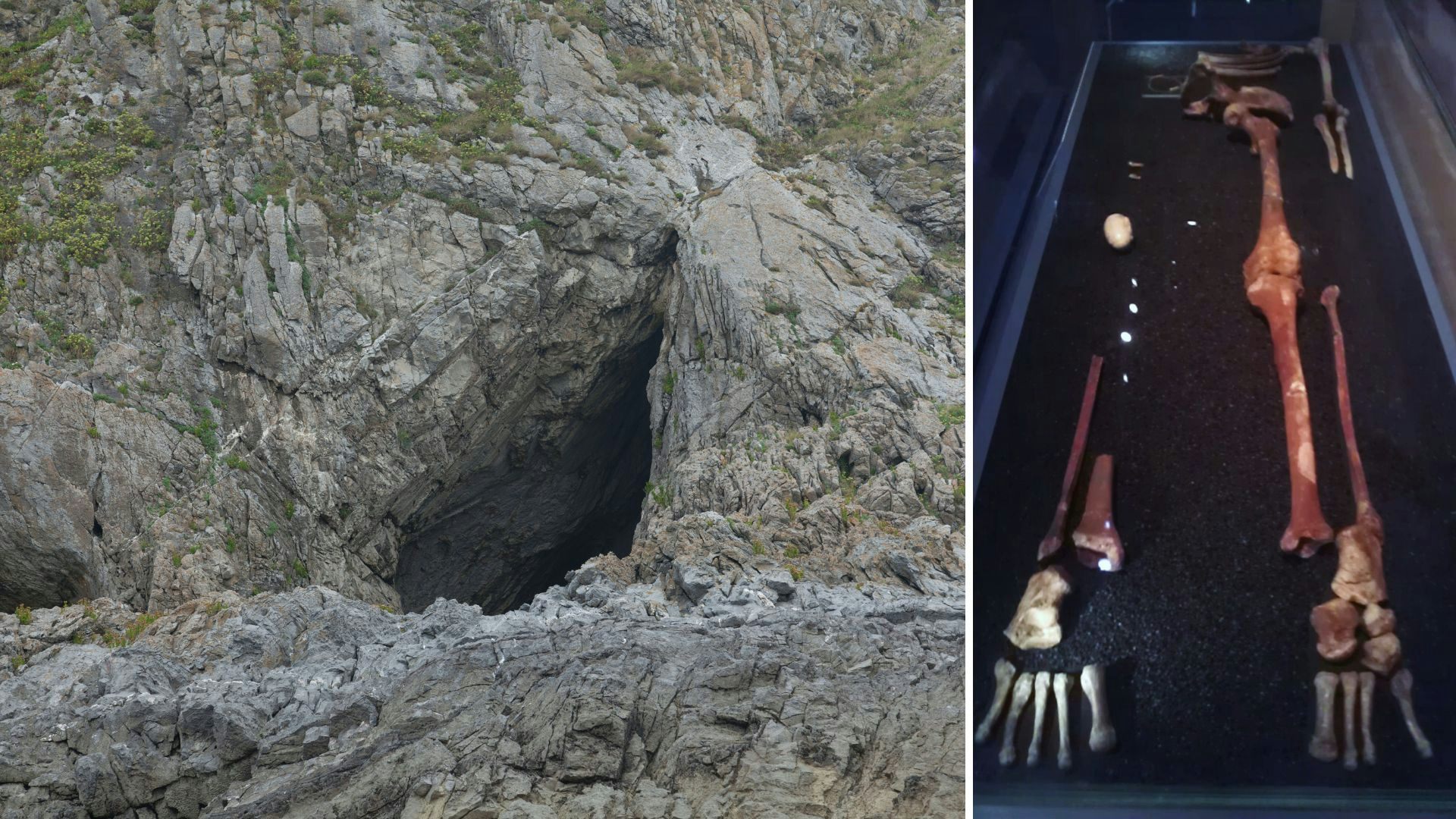
Human remains dating back more than 30,000 years were found at Paviland cave in Gower.
Credit: Left: Leighton Collins/Shutterstock; right: Ethan Doyle White CC BY-SA 3.0.
Ffion Reynolds, Cardiff University and Jacqui Mulville, Cardiff University
When William Buckland from the University of Oxford grabbed his trusty collecting bag and headed for the Gower peninsula in south Wales in January 1823, he ended up discovering more than he had bargained for.
It is 200 years to the day since the geology professor happened upon one of the oldest human burial sites in western Europe, kicking off an archaeological debate that would last for the next two centuries. The anniversary of his discovery has once again sparked a debate about whether the human remains should now be repatriated from Oxford to Wales.
In December 1822, Buckland had received a package containing an elephant tusk and skull (which was really a mammoth), along with a basket full of animal bones. The finds from Paviland cave had been sent by Lady Mary Cole, who lived in Penrice Castle, Gower. The package was so intriguing to Buckland he decided he needed to visit the location in person.
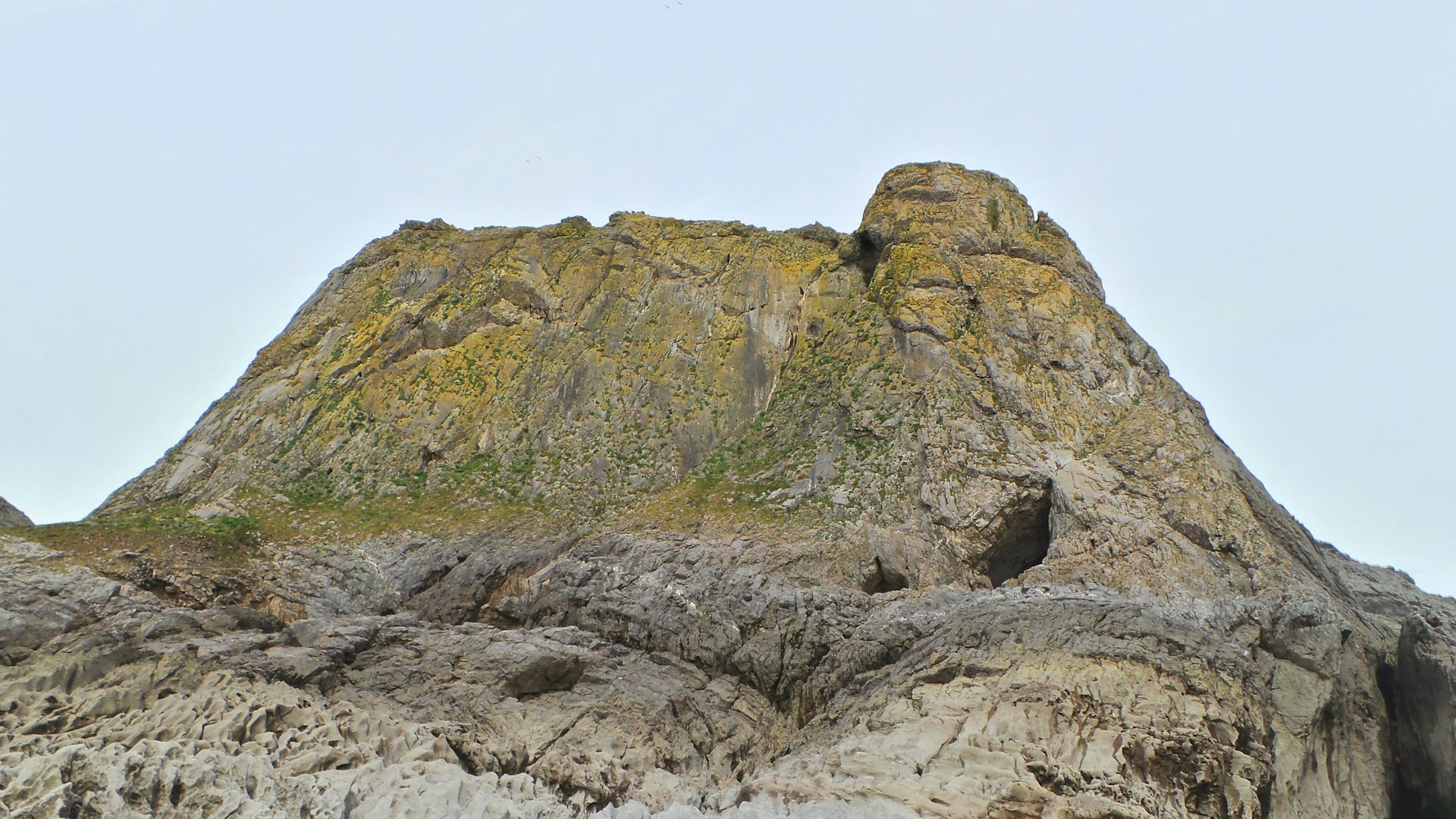
Paviland cave on the Gower peninsula, where a human skeleton covered in red ochre was discovered by William Buckland in January 1823.
Credit: Ffion Reynolds
At the time, our account of human history was still largely dictated by the chronology of the Bible. This meant Buckland clung to the idea of a cataclysmic biblical “deluge”.
He was adamant any extinct animals found during his explorations had been washed into the caves by the great flood. This idea became his biggest problem when trying to decipher the depth of time presented at Paviland.
A skeleton story
Paviland, or Goat’s Hole cave, is a limestone cave between Rhossili and Port Eynon on the Gower coast. Today, as at the time of Buckland, the cave is cut off by the tide for most of the year. Buckland visited during winter when tides are at their lowest, meaning he was able to enter and start his excavations immediately.
It wasn’t long before he found an undisturbed burial of human bones and objects, all stained red with ochre. The remains lacked a skull, but on excavation were found to be surrounded by ivory objects (including rods and rings), a clutch of periwinkle shells, and worked flints. Buckland took them back with him to Oxford.
At first he thought the human bones were those of a man, and joked that they belonged to a tax collector who had been murdered by smugglers, for which this coastal area was notorious.
Next, Buckland suggested the remains belonged to a witch, due to the presence of a “blade bone of mutton”. Based on his knowledge of Welsh customs, he imagined this was used as some kind of conjuring tool.
Finally, he argued the skeleton was that of a painted female prostitute, which made the shell beads implements of gambling, while the rings were jewellery made from Roman elephant ivory. This was the story he stuck to, and the one which best fitted his biblical flood theory.
The real issue is that Buckland did not seem to have studied the human bones in detail. Perhaps even if he had, he wanted to suppress what he found. Had he examined the bones properly, he would have noticed the individual wasn’t female but a young male, aged 25–30, who stood about 173cm (5ft 7in) in height.
Buckland’s theories had buckled.
Who was really buried here?
In 2008, radiocarbon-dating techniques conclusively showed these bones belonged to an individual buried around 33,000 years ago.
Paviland, at this time, would have been located at least 60 miles inland, on a cliff above a grassy plain. The landscape would have been teeming with prey such as mammoths, woolly rhinos, giant deer, bison and reindeer.
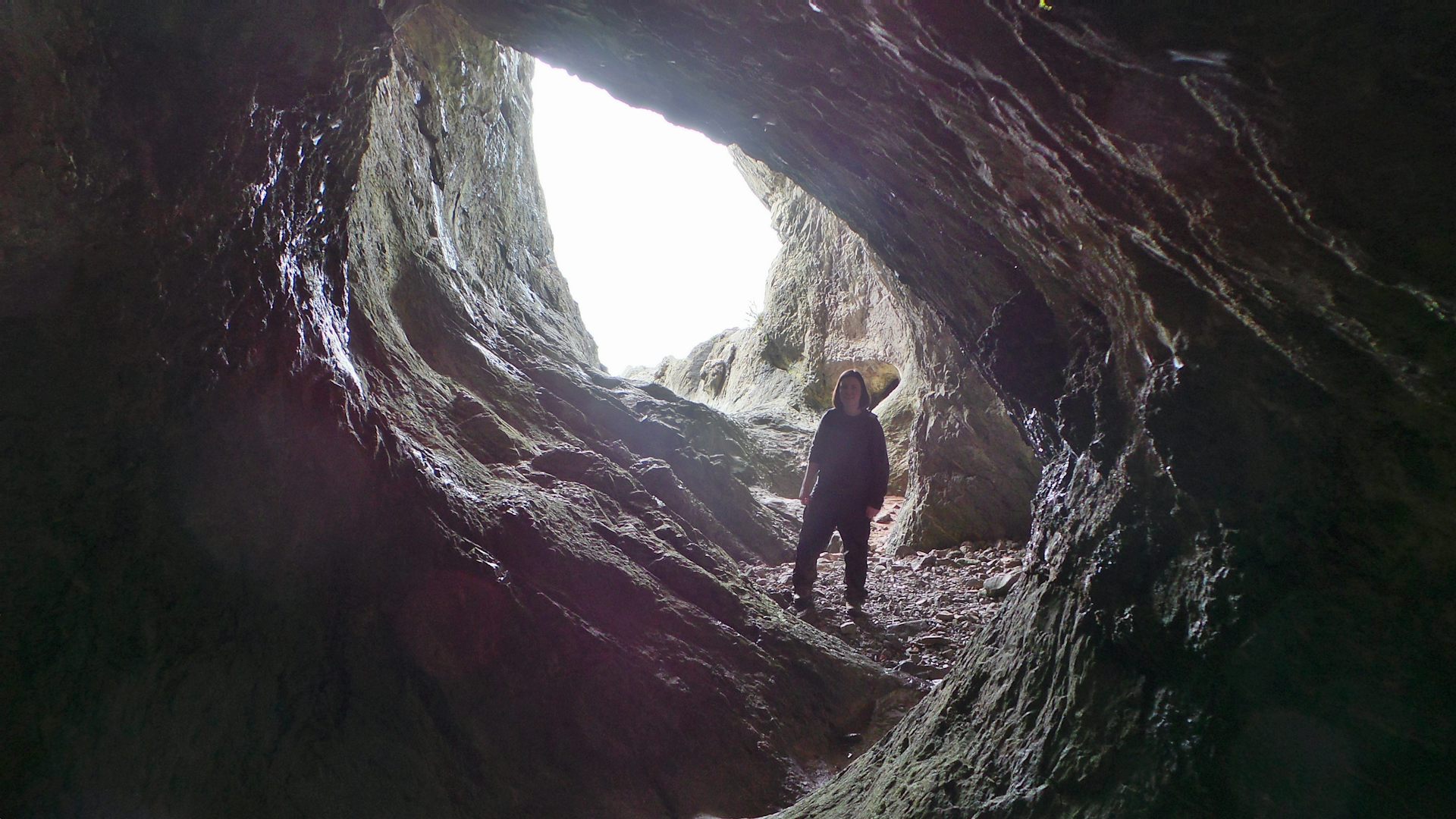
Ffion Reynolds at Paviland cave, taken during the low spring tides of March 2016 when the cave was accessible for a few hours.
Credit: Ffion Reynolds, Author provided
Between their discovery and the present day, the Paviland bones have been on a journey from tax man, witch, prostitute and Palaeolithic hunter to the more recent suggestions of shaman or spiritual figure. People now visit the cave as a form of pilgrimage. But there have also been calls for the skeleton to take another journey – back to Wales.
Repatriation
Buckland did return some of his finds from Oxford to Wales. The hyena jaw bones are displayed at Swansea Museum, while an ivory staff is stored at St Fagans National Museum of History in Cardiff.
But the remarkable human remains are still on display at the University of Oxford’s Museum of Natural History. Some have called these bones the “Welsh Elgin marbles”.
A new #poem to commemorate the #Paviland relics, 200 yrs since they were uncovered by William Buckland. ‘Facing the Red Man’ was an attempt to capture the sense of cultural loss to Gower, Swansea and South Wales. This is in my new pamphlet. https://t.co/tapmUsIbzu pic.twitter.com/fR7GVpVpAI
— Matthew M C Smith (@MatthewMCSmith) January 15, 2023
Repatriation is a complex issue. From the Mold Gold Cape to the Benin Bronzes, returning materials to nations or regions attracts controversy.
The Paviland remains are well cared for where they are, so there’s a question as to whether they should “come home” at all. A further debate is whether they should be returned as an ancestor or an exhibit.
However, the importance of this individual to European and global histories means their return would certainly enhance the Welsh national collection – and shine a spotlight on the unique archaeology and caves of Wales.
Ffion Reynolds, Honorary Research Fellow, Cardiff University and Jacqui Mulville, Professor in Bioarchaeology, Head of Archaeology and Conservation, Cardiff University
When Christian apologists try to tell you (wrongly) that Christians invented science and science grew out of Christianity and even Bible literalism, it's worth remembering how far science has come since those bad old days when conclusions were orthodox dogmas and the evidence was ignored or bent out of shape to make it fit the dogmas. The bad old days when telling the truth and disagreeing with the Christian dogmas could cost you your livelihood and dogmas were enforced not by facts and reason but by bullying and abuse of power.
It was not until science learned to ignore the dogmas and accept that the Bible is neither science nor history, that it began to make any real progress in finding out the truth about the world we live in, hence the world in 2023 is a vastly different place to the world of 1823 - at least in the more civilised, educated parts of it.
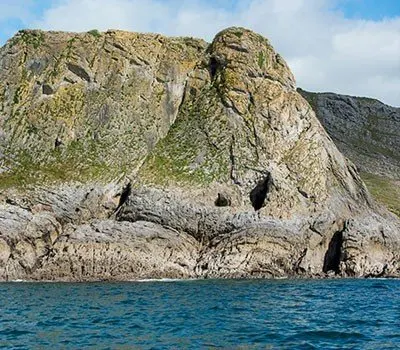
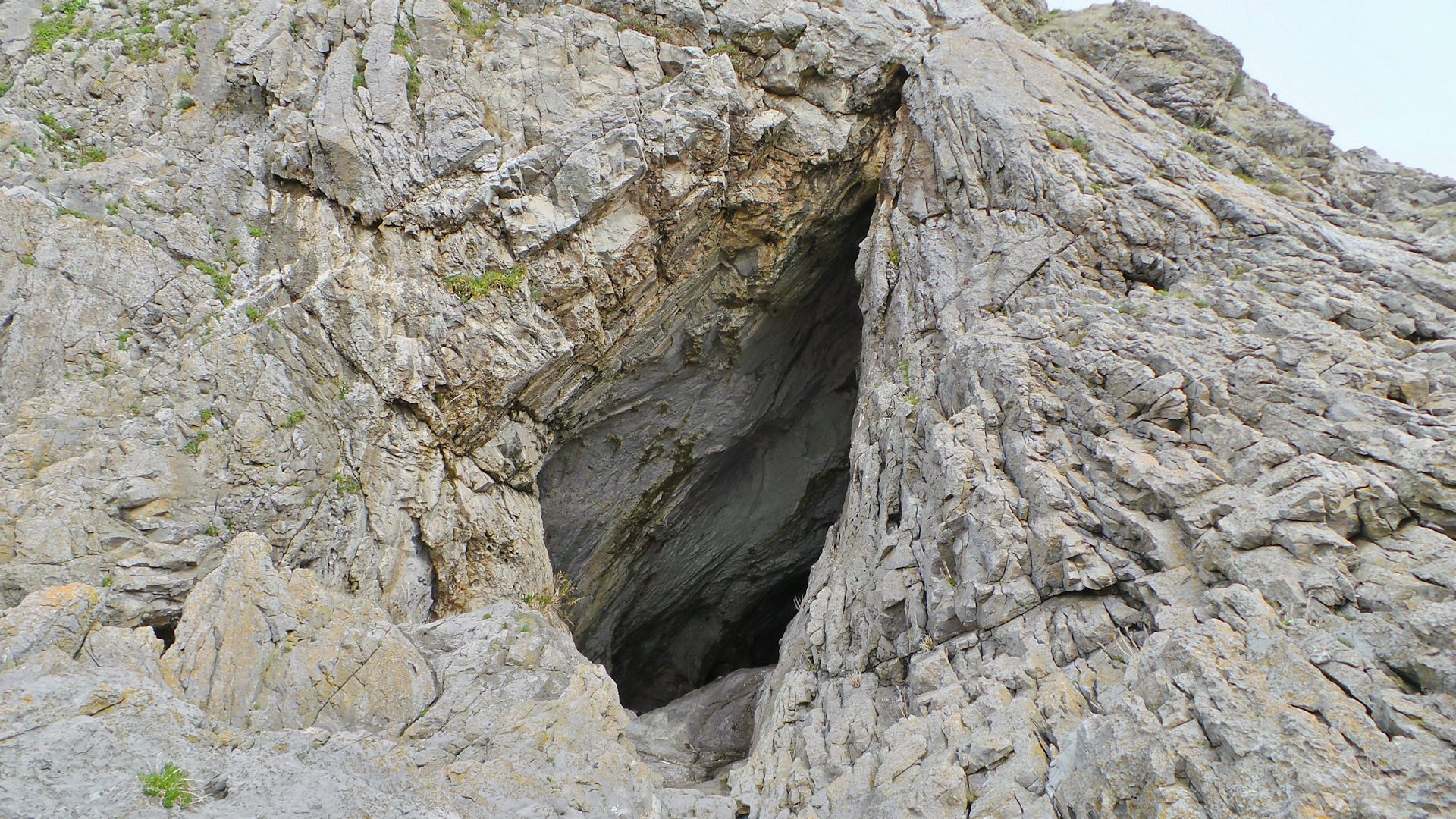



No comments :
Post a Comment
Obscene, threatening or obnoxious messages, preaching, abuse and spam will be removed, as will anything by known Internet trolls and stalkers, by known sock-puppet accounts and anything not connected with the post,
A claim made without evidence can be dismissed without evidence. Remember: your opinion is not an established fact unless corroborated.